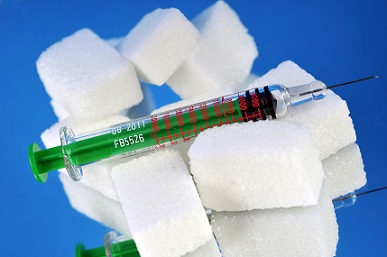Science of the future can cure disease with bacteria

Related topics
Health Innovation SMEs Innovation in SMEs Health, Demographic Change and Wellbeing Belgium Denmark Germany Italy Netherlands Portugal United KingdomBacteria are normally perceived as a threat to health, to be eradicated with antibiotics and bleach. But one common strain of bacteria used to make buttermilk and cheese may one day eliminate the need for insulin therapy for people with diabetes.
Type I diabetes (T1DM) is an autoimmune system disorder in which the immune system destroys insulin-producing cells in the pancreas. The incidence of childhood T1DM is increasing at about 3 percent a year. It is the most common metabolic disease among young people and has become a major public health concern worldwide. Two million people in Europe and millions more worldwide suffer from the disease.
As of now, T1DM cannot be prevented, and lifelong insulin therapy is needed for survival. Diabetes can damage the heart, blood vessels, eyes, kidneys and nerves, which can reduce quality of life and shorten expected lifespan.
Researchers with the European Union (EU)-funded project Natural Immunomodulators as Novel Immunotherapies for Type I Diabetes – or NAIMIT – are testing genetically altered bacteria known as Lactococcus lactis, which is showing promise to produce a valid treatment for Type I diabetes. Success in these clinical trials already has had profound implications for future innovation and could have a positive impact on human health.
“What we see happening worldwide is a shift towards Type I occurring at earlier ages,” said NAIMIT project coordinator Chantal Mathieu, a professor at the clinical and experimental endocrinology department at Belgium’s Catholic University of Leuven. “Something is driving the disease to occur in younger ages, rather than an overall increase in prevalence.”
In clinical trials, NAIMIT researchers used a very low dose of an antibody in diabetic mice for four days. The mice were then fed the bacterium for six weeks. Researchers found that the disease had disappeared in more than half of the mice after just one week of treatment. And it stayed away, not only during the six weeks of treatment, but for eight weeks after therapy ended. Researchers had reversed the disease in 60 percent of mice.
“This bacterium is a very elegant system that is already being tested in humans for other diseases,” Mathieu said. “It is absolutely accepted as a therapy. Time-wise, of course, we will have to see what happens.”
If the results of NAIMIT’s findings could be developed into a drug, Mathieu said, this would support EU goals regarding providing better health for European citizens. This would also further EU economic goals, she added, since it is a Belgian company that produces the genetically altered bacterium and it is a European collaborative effort that is bringing this to market.
NAIMIT was funded for a five-year period beginning in November 2009. At the end of the project, Mathieu says she hopes to be using several of their interventions in their first clinical trial patients.
The NAIMIT project operates with additional grant funds from the Juvenile Diabetes Research Foundation and involves 14 partners, which represents a consortium of universities and small- and medium-sized enterprises (SMEs) such as ActoGeniX NV in Belgium and ImmunoCore in England. Six countries are represented in the project, which employs more than 100 scientists in its research efforts. NAIMIT’s total budget is €14.25 million, of which the EU contributed €10.92 million.
Related article: Tablet treatment could end child diabetes, says researcher
